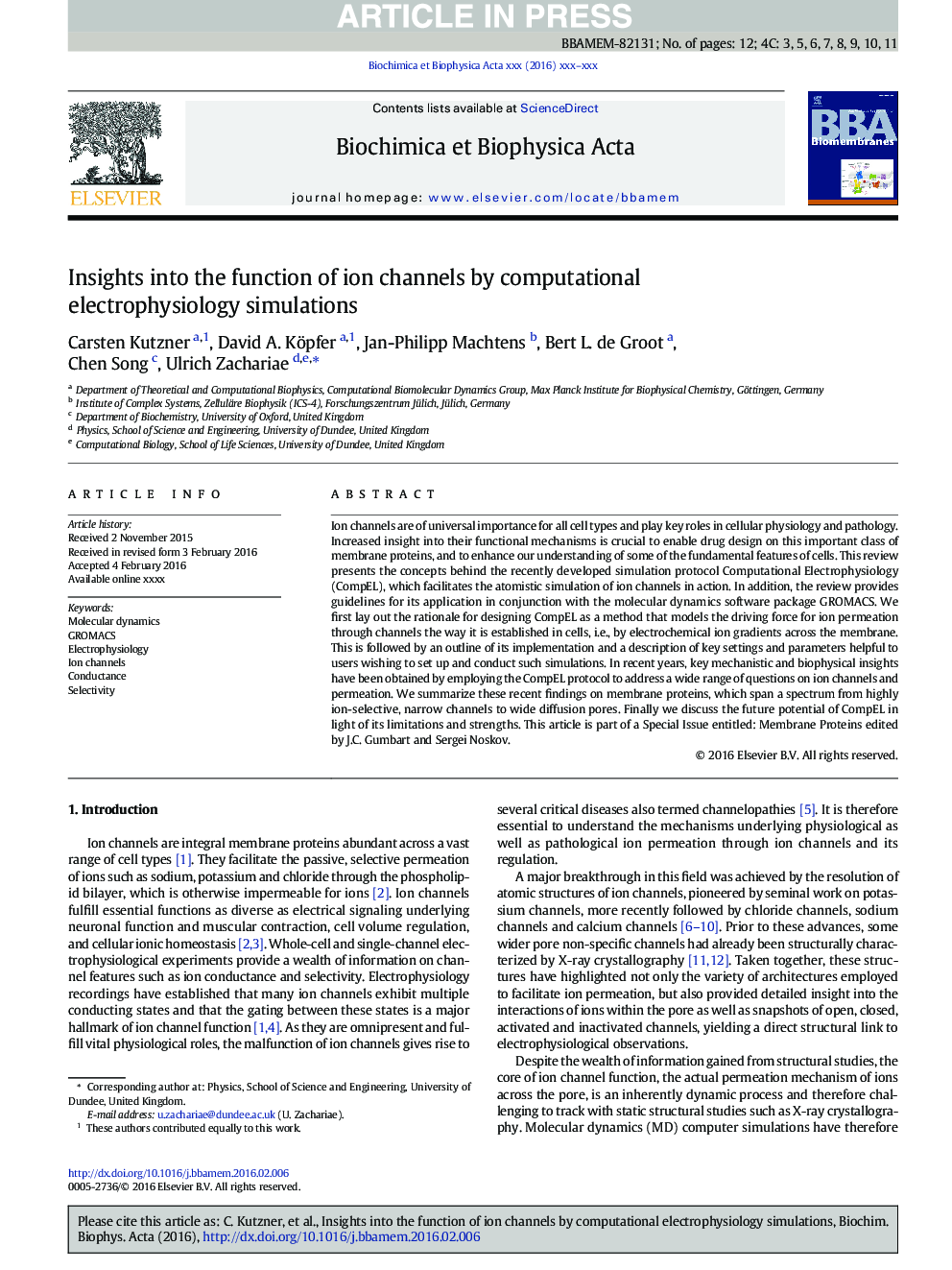| Article ID | Journal | Published Year | Pages | File Type |
|---|---|---|---|---|
| 10796419 | Biochimica et Biophysica Acta (BBA) - Biomembranes | 2016 | 12 Pages |
Abstract
Ion channels are of universal importance for all cell types and play key roles in cellular physiology and pathology. Increased insight into their functional mechanisms is crucial to enable drug design on this important class of membrane proteins, and to enhance our understanding of some of the fundamental features of cells. This review presents the concepts behind the recently developed simulation protocol Computational Electrophysiology (CompEL), which facilitates the atomistic simulation of ion channels in action. In addition, the review provides guidelines for its application in conjunction with the molecular dynamics software package GROMACS. We first lay out the rationale for designing CompEL as a method that models the driving force for ion permeation through channels the way it is established in cells, i.e., by electrochemical ion gradients across the membrane. This is followed by an outline of its implementation and a description of key settings and parameters helpful to users wishing to set up and conduct such simulations. In recent years, key mechanistic and biophysical insights have been obtained by employing the CompEL protocol to address a wide range of questions on ion channels and permeation. We summarize these recent findings on membrane proteins, which span a spectrum from highly ion-selective, narrow channels to wide diffusion pores. Finally we discuss the future potential of CompEL in light of its limitations and strengths. This article is part of a Special Issue entitled: Membrane Proteins edited by J.C. Gumbart and Sergei Noskov.
Related Topics
Life Sciences
Biochemistry, Genetics and Molecular Biology
Biochemistry
Authors
Carsten Kutzner, David A. Köpfer, Jan-Philipp Machtens, Bert L. de Groot, Chen Song, Ulrich Zachariae,
